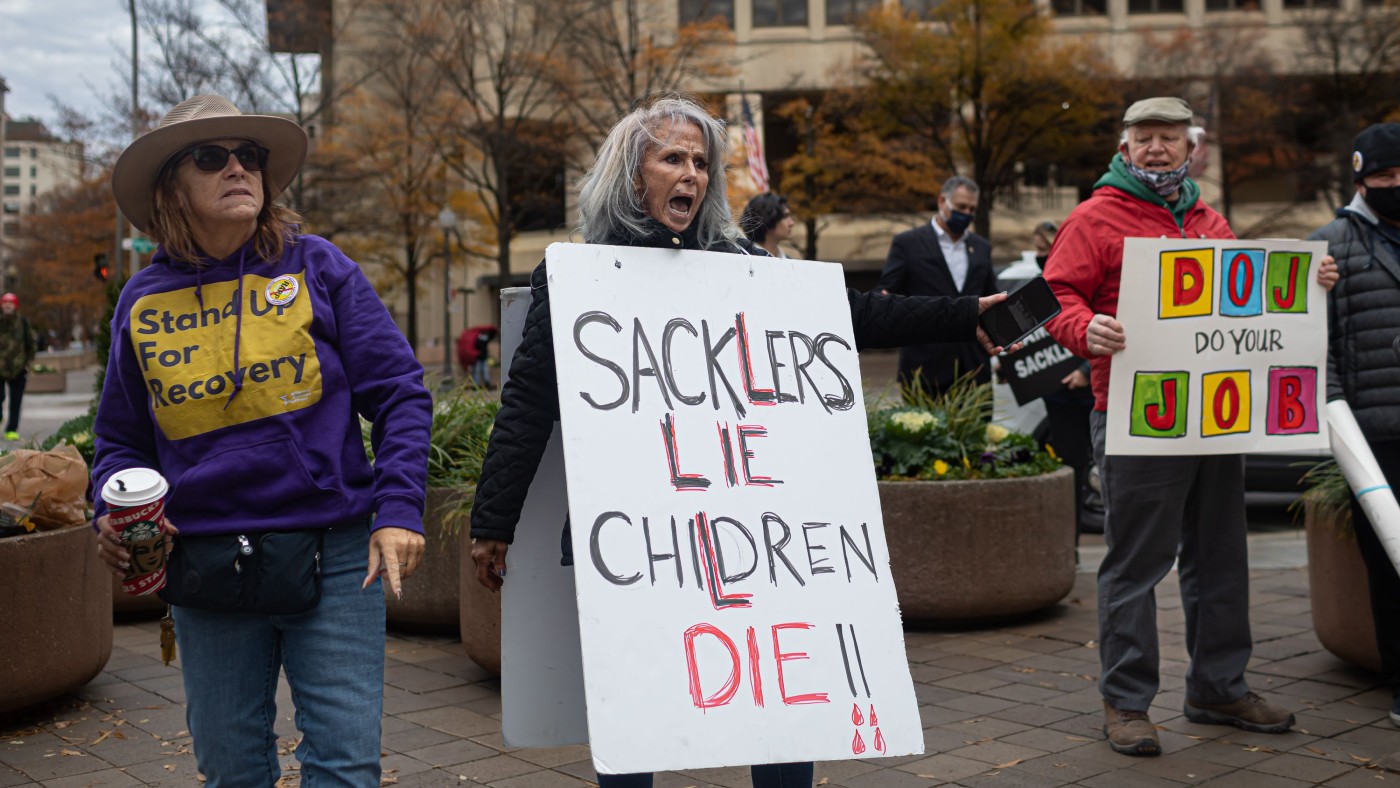America’s opioid epidemic
For the past 20 years, the US has been battling a devastating public health crisis caused by powerful painkillers

For most of the 1980s, drug overdose deaths in the US remained fairly steady, at well under 10,000 per year, largely because illegal heroin markets remained relatively small and stable.
Then, in the 1990s, deaths rose sharply. By 2000, nearly 20,000 people were dying from overdoses annually. In 2021, the number topped 100,000 in a year for the first time; an increase of more than 500% over a decade. To put this in context, at the height of the HIV epidemic, fewer than 50,000 Americans were dying from the disease; over the past 25 years, the US has lost more than a million lives to drug overdoses – much more than to both World Wars combined.
The lion's share of these were caused by opioids, a term that encompasses both natural opiates extracted from the poppy, such as morphine and heroin, and synthetic compounds with similar properties.
The Week
Escape your echo chamber. Get the facts behind the news, plus analysis from multiple perspectives.

Sign up for The Week's Free Newsletters
From our morning news briefing to a weekly Good News Newsletter, get the best of The Week delivered directly to your inbox.
From our morning news briefing to a weekly Good News Newsletter, get the best of The Week delivered directly to your inbox.
When did the crisis begin?
"The approval of Purdue Pharma's long-acting opioid medication OxyContin in 1995 is as reasonable a point as any to date the beginning of the modern opioid crisis," concluded The Stanford-Lancet Commission in its report on the issue. The US Food and Drug Administration (FDA) approved Purdue's painkiller, which was designed to be slowly released ("contin" stands for continuous release). Purdue claimed, without proper evidence, that this design would prevent it from being addictive or prone to abuse, and aggressively promoted it to doctors, in a way that was later found to be fraudulent. Before this, because of these risks, opioids had been used only in very limited cases: cancer, surgery, palliative care. Purdue encouraged doctors to prescribe OxyContin for less acute, chronic pain – arthritis, back pain, sports injuries – although it is very potent.
What effect did this have?
OxyContin was given out in unprecedented quantities: prescriptions peaked in 2012, at more than 255 million in the US over the year. This, and other comparable opioids such as Vicodin, created a vast new class of addicts, many of them in areas and social classes previously unaffected by such problems. By 2011, OxyContin was the leading cause of drug-related deaths in the US. This is known as the first wave of the crisis; it also drove the second wave, which resulted when many addicts, finding prescription painkillers too expensive or too difficult to buy, turned to heroin. A study of young urban injection-drug users interviewed in 2008 and 2009 found that 86% had used opioid painkillers before trying heroin. The illegal heroin trade expanded greatly to meet the new market, and from 2010 there was an increase in heroin overdoses. Then, around 2013, came the third wave of the crisis.
What was the third wave?
It was caused by illegal synthetic opioids such as fentanyl, which led to a big increase in drug overdose deaths. Fentanyl is one of the most powerful opioids: it is 50 to 100 times as strong as morphine. While a lethal dose of heroin is about 30 milligrams, just three milligrams of fentanyl, equivalent to a few grains of salt, would kill an average-sized adult. Because it is so potent, fentanyl is easy to smuggle in large doses. It is also much cheaper to produce than other opioids – it is made from chemicals rather than poppies – and so is used to lace other drugs, making potent and dangerous combinations. Finally, because it is produced illegally, mostly in Chinese labs, before being prepared and smuggled into the US by primarily Mexican drug gangs, the strength of fentanyl varies unpredictably, often with fatal consequences. Because of fentanyl, concluded the Stanford-Lancet report, "an already dire situation became a public health catastrophe".
Why did this crisis happen?
The epidemic was precipitated by a massive regulatory failure, partly because the FDA was co-opted by a pharmaceutical industry irresponsibly pursuing profits: the FDA regulator who oversaw the approval of OxyContin, Dr Curtis Wright, left the agency shortly afterwards, and later took a job at Purdue. But the crisis spiralled out of control because of conditions in US society, from a healthcare system that favours prescribing drugs over other solutions, to the existence of a huge network for distributing illegal drugs. Underlying these, many argue, are still more deep-seated societal ills. Drug overdoses, along with suicides and terminal alcohol-related diseases, have been described as "deaths of despair": a reaction to poverty, declining wages and the destruction of stable ways of life previously buttressed by family, community, religion and steady work.
A free daily email with the biggest news stories of the day – and the best features from TheWeek.com
What is the government doing about it?
Over the past decade, the conditions for prescribing opioids have been greatly tightened. However, prescription rates remain many times higher than in other developed countries. This month, the US announced sanctions on 25 China-based firms and individuals for their alleged involvement in the production of chemicals used to make fentanyl. "We know who is responsible for poisoning the American people with fentanyl," Attorney General Merrick Garland said. The US government has invested $5bn in increasing access to mental health care and in treating opioid addiction. The drug naloxone is widely used to reverse overdoses.
Is the situation improving?
It remains extremely severe. Provisional figures suggest that there were 107,000 drug overdose deaths in 2022, 68% of them involving synthetic opioids, primarily fentanyl. There are estimated to be around two million opioid addicts in the US. In 2017, the overall monetary cost of the crisis was officially estimated at over a trillion dollars. The cost in unemployment, broken lives and misery is impossible to calculate.
-
 Trump’s poll collapse: can he stop the slide?
Trump’s poll collapse: can he stop the slide?Talking Point President who promised to ease cost-of-living has found that US economic woes can’t be solved ‘via executive fiat’
-
 Codeword: December 7, 2025
Codeword: December 7, 2025The daily codeword puzzle from The Week
-
 Crossword: December 7, 2025
Crossword: December 7, 2025The daily crossword from The Week
-
 Pakistan: Trump’s ‘favourite field marshal’ takes charge
Pakistan: Trump’s ‘favourite field marshal’ takes chargeIn the Spotlight Asim Munir’s control over all three branches of Pakistan’s military gives him ‘sweeping powers’ – and almost unlimited freedom to use them
-
 Pushing for peace: is Trump appeasing Moscow?
Pushing for peace: is Trump appeasing Moscow?In Depth European leaders succeeded in bringing themselves in from the cold and softening Moscow’s terms, but Kyiv still faces an unenviable choice
-
 Femicide: Italy’s newest crime
Femicide: Italy’s newest crimeThe Explainer Landmark law to criminalise murder of a woman as an ‘act of hatred’ or ‘subjugation’ but critics say Italy is still deeply patriarchal
-
 Brazil’s Bolsonaro behind bars after appeals run out
Brazil’s Bolsonaro behind bars after appeals run outSpeed Read He will serve 27 years in prison
-
 The $100mn scandal undermining Volodymyr Zelenskyy
The $100mn scandal undermining Volodymyr ZelenskyyIn the Spotlight As Russia continues to vent its military aggression on Ukraine, ‘corruption scandals are weakening the domestic front’
-
 Americans traveling abroad face renewed criticism in the Trump era
Americans traveling abroad face renewed criticism in the Trump eraThe Explainer Some of Trump’s behavior has Americans being questioned
-
 Massacre in Darfur: the world looked the other way
Massacre in Darfur: the world looked the other wayTalking Point Atrocities in El Fasher follow decades of repression of Sudan’s black African population
-
 Nigeria confused by Trump invasion threat
Nigeria confused by Trump invasion threatSpeed Read Trump has claimed the country is persecuting Christians